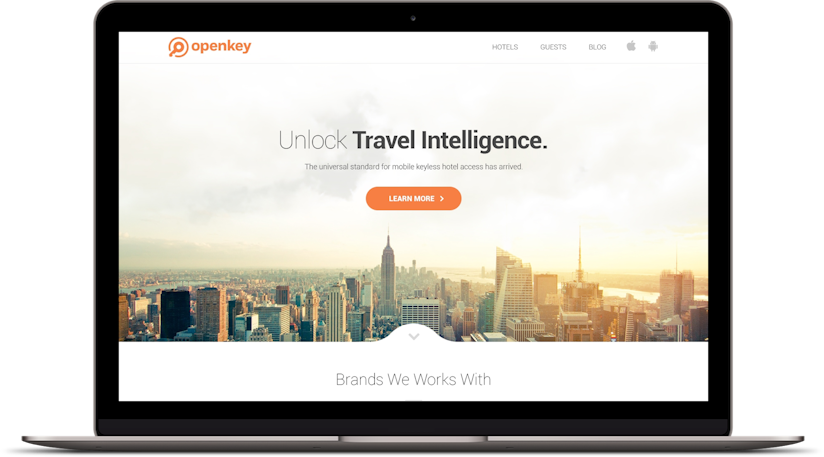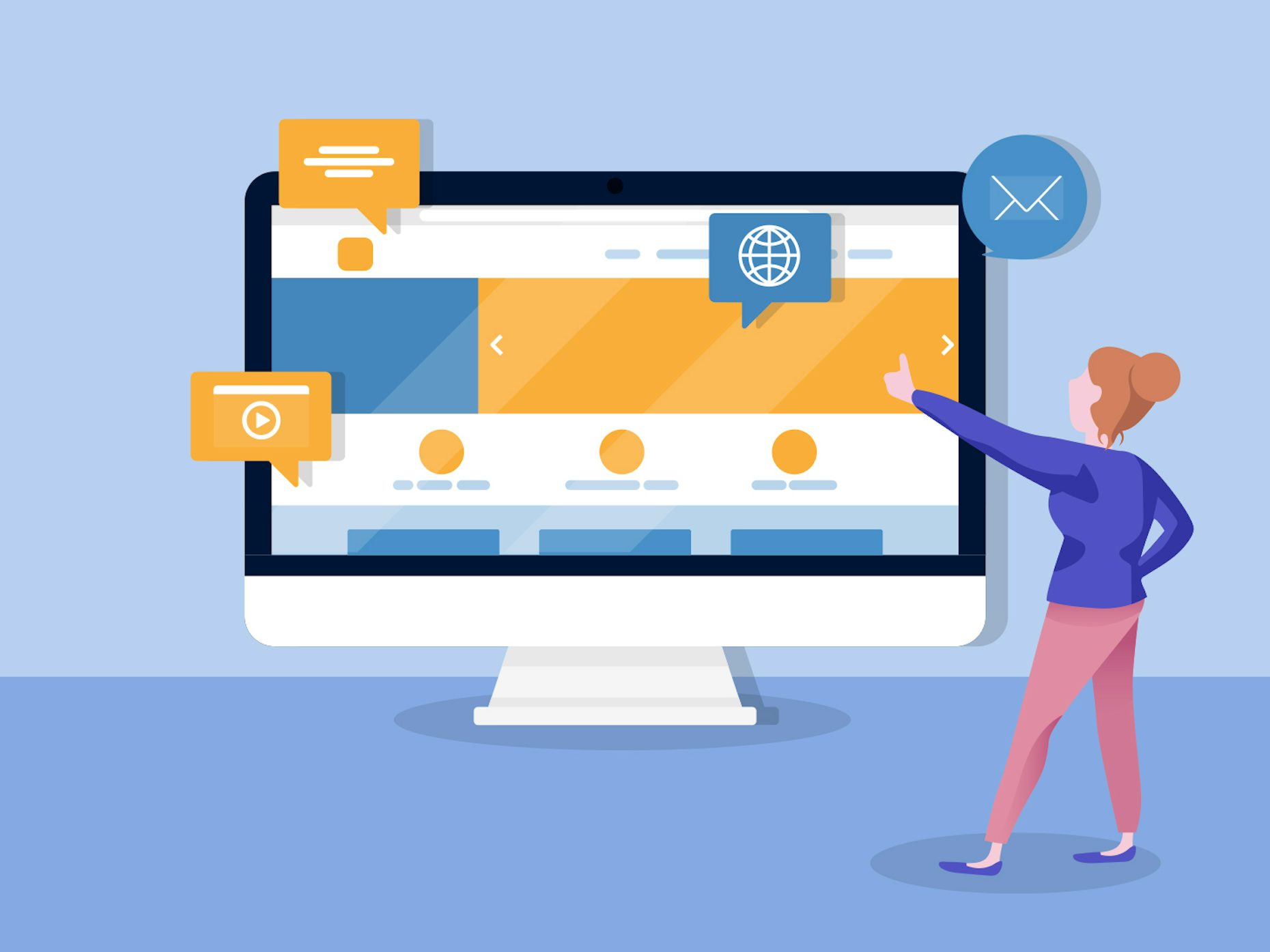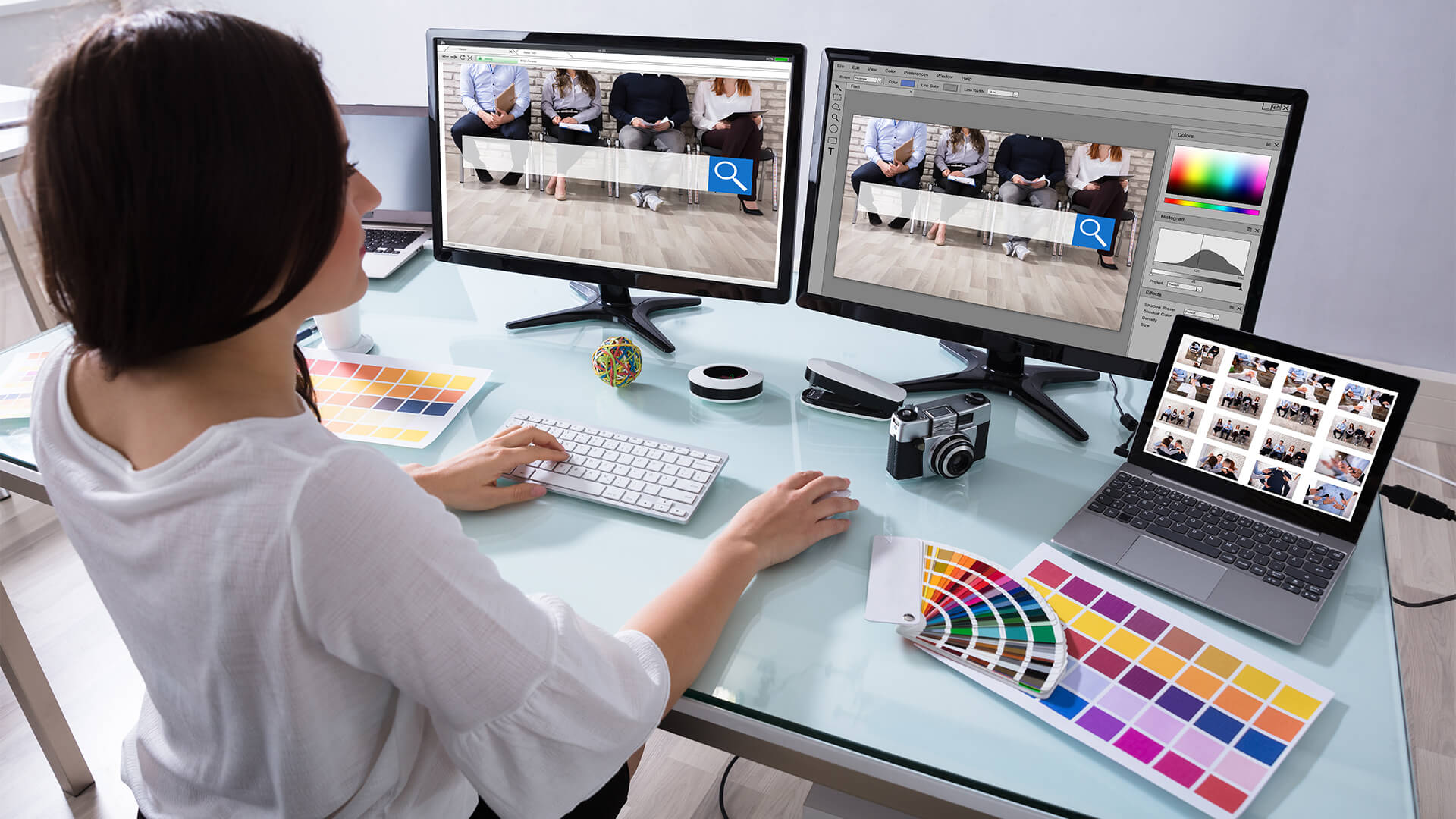All Categories
Featured
Table of Contents
- – St Louis Seo Company - St Louis Web Design And...
- – Responsive Web Design - A List Apart Tips and...
- – Web Design Services + Website Development Age...
- – What Is A Web Designer? (2022 Guide) - Brains...
- – Web Development Bachelor's Degree - Full Sail...
- – Web Design Vs. Web Development - Upwork Tips ...
- – What Is Web Design? A Comprehensive Guide - ...
- – Webdesign Designs, Themes, Templates And ......
- – Learn Responsive Design - Web.dev Tips and T...
- – Learn Web Design With Online Courses, Classe...
- – Web Design Museum 1991 – 2006 Tips and Tricks:
St Louis Seo Company - St Louis Web Design And Internet ... Tips and Tricks:
Quick summary Use and the energy, not the visual style, figure out the success or failure of a website. Since the visitor of the page is the only person who clicks the mouse and for that reason chooses whatever, user-centric style has established as a basic method for successful and profit-oriented website design - web design frederick md.
and the energy, not the visual style, identify the success or failure of a site. Given that the visitor of the page is the only individual who clicks the mouse and for that reason decides everything, user-centric style has ended up being a basic method for effective and profit-oriented website design. If users can't use a feature, it may as well not exist.
g. where the search box need to be placed) as it has already been performed in a number of short articles; instead we concentrate on the methods which, used properly, can lead to more sophisticated design choices and simplify the procedure of viewing presented info. Please discover that you may be thinking about the usability-related posts we have actually published before: Concepts Of Good Site Design And Efficient Website Design Guidelines, In order to utilize the principles effectively we initially require to understand how users communicate with websites, how they think and what are the fundamental patterns of users' habits.
Responsive Web Design - A List Apart Tips and Tricks:
Visitors glance at each brand-new page, scan some of the text, and click on the very first link that captures their interest or vaguely resembles the important things they're trying to find. There are large parts of the page they do not even look at. The majority of users search for something intriguing (or helpful) and clickable; as quickly as some appealing prospects are found, users click.
If a page offers users with premium content, they want to compromise the content with ads and the design of the site. This is the reason why not-that-well-designed sites with top quality material acquire a great deal of traffic over years. Material is more crucial than the design which supports it.

Users don't read, they scan. Notice how "hot" areas abrupt in the middle of sentences. This is common for the scanning procedure. Extremely easy concept: If a website isn't able to fulfill users' expectations, then designer failed to get his job done correctly and the business loses cash. The higher is the cognitive load and the less user-friendly is the navigation, the more ready are users to leave the website and search for options.
Web Design Services + Website Development Agency Tips and Tricks:
Neither do they scan web page in a direct style, going sequentially from one site section to another one. Instead users satisfice; they choose the first reasonable option. As soon as they find a link that looks like it might lead to the objective, there is a great possibility that it will be right away clicked.
It doesn't matter to us if we understand how things work, as long as we can utilize them. If your audience is going to act like you're creating signboard, then style great billboards." Users desire to have the ability to control their web browser and depend on the constant data discussion throughout the website.
If the navigation and website architecture aren't instinctive, the variety of concern marks grows and makes it harder for users to comprehend how the system works and how to receive from point A to point B. A clear structure, moderate visual clues and easily recognizable links can help users to discover their path to their goal.
What Is A Web Designer? (2022 Guide) - Brainstation® Tips and Tricks:

claims to be "beyond channels, beyond items, beyond circulation". What does it imply? Given that users tend to explore websites according to the "F"-pattern, these 3 statements would be the very first aspects users will see on the page once it is filled. Although the design itself is basic and intuitive, to understand what the page has to do with the user needs to look for the response.
As soon as you have actually achieved this, you can communicate why the system works and how users can gain from it. People won't use your web site if they can't find their way around it. 2. Do Not Waste Users' Persistence, In every project when you are going to provide your visitors some service or tool, attempt to keep your user requirements minimal.
First-time visitors are prepared to, not filling long web forms for an account they may never use in the future. Let users explore the website and discover your services without forcing them into sharing personal information. It's not affordable to force users to get in an e-mail address to check the function.
Web Development Bachelor's Degree - Full Sail University Tips and Tricks:
Stikkit is an ideal example for an user-friendly service which requires nearly nothing from the visitor which is inconspicuous and comforting. Which's what you desire your users to feel on your web site. Obviously, Mite requires more. The registration can be done in less than 30 seconds as the form has horizontal orientation, the user doesn't even require to scroll the page.
A user registration alone suffices of an impediment to user navigation to minimize inbound traffic. 3. Manage To Focus Users' Attention, As websites offer both fixed and dynamic material, some aspects of the interface attract attention more than others do. Certainly, images are more distinctive than the text just as the sentences marked as bold are more attractive than plain text.
Focusing users' attention to specific locations of the website with a moderate usage of visual components can help your visitors to get from point A to point B without thinking about how it in fact is expected to be done. The less enigma visitors have, the they have and the more trust they can develop towards the business the site represents.
Web Design Vs. Web Development - Upwork Tips and Tricks:
4. Aim For Feature Direct exposure, Modern website design are normally criticized due to their technique of assisting users with visually appealing 1-2-3-done-steps, large buttons with visual results and so on. From the design point of view these aspects actually aren't a bad thing. On the contrary, such as they lead the visitors through the site material in a really simple and easy to use way.
The website has 9 primary navigation options which show up at the very first glance. The option of colors may be too light. is a basic principle of successful user interface design. It doesn't truly matter how this is attained. What matters is that the material is well-understood and visitors feel comfortable with the method they engage with the system.
Instead a rate: just what visitors are looking for. An optimum service for effective writing is touse brief and concise phrases (come to the point as rapidly as possible), use scannable layout (classify the material, use multiple heading levels, utilize visual elements and bulleted lists which break the circulation of uniform text blocks), use plain and objective language (a promo does not require to sound like ad; give your users some affordable and unbiased reason why they need to use your service or stay on your website)6.
What Is Web Design? A Comprehensive Guide - Wix.com Tips and Tricks:
Users are rarely on a website to enjoy the design; additionally, most of the times they are looking for the info regardless of the style - web design frederick md. Aim for simpleness instead of intricacy. From the visitors' perspective, the very best site design is a pure text, with no advertisements or further content blocks matching precisely the question visitors used or the material they have actually been trying to find.
Finch plainly presents the details about the website and provides visitors a choice of choices without overcrowding them with unnecessary content. 7. Don't Hesitate Of The White Space, Really it's really hard to overstate the significance of white space. Not just does it assist to for the visitors, however it makes it possible to perceive the information presented on the screen.
Complex structures are more difficult to check out, scan, evaluate and deal with. If you have the choice in between separating 2 design sections by a noticeable line or by some whitespace, it's typically better to use the whitespace solution. (Simon's Law): the much better you handle to provide users with a sense of visual hierarchy, the much easier your material will be to view.
Webdesign Designs, Themes, Templates And ... - Dribbble Tips and Tricks:
The same conventions and guidelines must be used to all elements.: do the most with the least quantity of cues and visual elements. 4 significant indicate be thought about: simplicity, clarity, distinctiveness, and emphasis. Simpleness consists of only the elements that are crucial for communication. Clarity: all parts need to be designed so their significance is not ambiguous.
Conventions Are Our Pals, Standard design of website aspects does not result in an uninteresting web site. It would be an usability headache if all websites had various visual discussion of RSS-feeds.
understand what they're expecting from a website navigation, text structure, search placement etc. A common example from usability sessions is to equate the page in Japanese (presuming your web users don't know Japanese, e. g. with Babelfish) and provide your use testers with a job to discover something in the page of different language.
Learn Responsive Design - Web.dev Tips and Tricks:
Steve Krug suggests that it's better to, however make the most of conventions when you do not. 10. Test Early, Test Typically, This so-called TETO-principle must be used to every website design project as use tests frequently provide into substantial problems and issues associated with a provided design. Test not too late, not insufficient and not for the incorrect factors.
Some important points to keep in mind: according to Steve Krug, and screening one user early in the task is much better than screening 50 near completion. Accoring to Boehm's very first law, mistakes are most frequent during requirements and style activities and are the more expensive the later on they are removed.
That means that you develop something, test it, repair it and after that evaluate it again. There may be problems which haven't been discovered during the first round as users were virtually obstructed by other problems. use tests. Either you'll be indicated the problems you have or you'll be indicated the lack of significant style defects which is in both cases a helpful insight for your job.
Learn Web Design With Online Courses, Classes, & Lessons Tips and Tricks:

This holds for designers as well. After you have actually dealt with a site for few weeks, you can't observe it from a fresh perspective any longer. You understand how it is developed and for that reason you know exactly how it works you have the knowledge independent testers and visitors of your website wouldn't have.
It can be connected to other areas such as graphic design, user experience, and multimedia arts, however is more aptly seen from a technological viewpoint. It has actually become a large part of individuals's everyday lives. It is difficult to imagine the Web without animated graphics, different designs of typography, background, videos and music.

During 1991 to 1993 the World Wide Web was born. Text-only pages could be viewed utilizing a basic line-mode internet browser. There had actually been no integrated method to graphic style components such as images or noises.
Web Design Museum 1991 – 2006 Tips and Tricks:
The W3C was created in October 1994 to "lead the World Wide Web to its full potential by establishing common protocols that promote its evolution and guarantee its interoperability." This dissuaded any one company from monopolizing a propriety web browser and programming language, which could have altered the effect of the World Wide Web as a whole.
As this has actually taken place the technology of the web has actually also moved on. There have also been considerable changes in the way people use and access the web, and this has actually altered how websites are developed.
Learn more about Lovell Media Group LLC or TrainACETable of Contents
- – St Louis Seo Company - St Louis Web Design And...
- – Responsive Web Design - A List Apart Tips and...
- – Web Design Services + Website Development Age...
- – What Is A Web Designer? (2022 Guide) - Brains...
- – Web Development Bachelor's Degree - Full Sail...
- – Web Design Vs. Web Development - Upwork Tips ...
- – What Is Web Design? A Comprehensive Guide - ...
- – Webdesign Designs, Themes, Templates And ......
- – Learn Responsive Design - Web.dev Tips and T...
- – Learn Web Design With Online Courses, Classe...
- – Web Design Museum 1991 – 2006 Tips and Tricks:
Latest Posts
Siteinspire - Web Design Inspiration Tips and Tricks:
Html Responsive Web Design - W3schools Tips and Tricks:
What Is Web Design? - Interaction Design Foundation (Ixdf) Tips and Tricks:
More
Latest Posts
Siteinspire - Web Design Inspiration Tips and Tricks:
Html Responsive Web Design - W3schools Tips and Tricks:
What Is Web Design? - Interaction Design Foundation (Ixdf) Tips and Tricks: